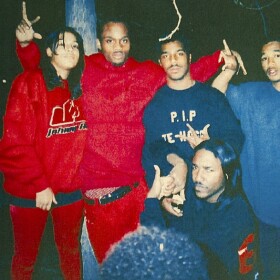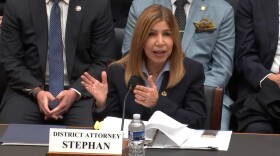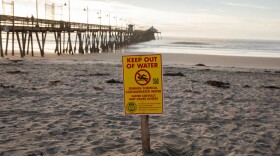This is a special six-part series called Dr J's. A new story will be published every day.
I've talked to James Carter several times on a cell phone he says he's borrowing from a friend. I'm not sure if that's actually true — cell phones aren't allowed in prison.
The first few times we talked, it seemed like no matter what I asked, Carter would just end up repeating the same thing.
"There's no evidence, no fingerprints, no eyewitnesses, no car, no gun, no nothing," he said again and again.
So what is the evidence against him? Right here I wish I could let you hear from Robert Hickey, the prosecutor on the case, but the San Diego County District Attorney's office wouldn't let me interview him. Instead, I can quote from his statements in the more than 1,400 pages of trial transcripts.
There wasn't much physical evidence against James Carter. Robert Hickey said this himself in his closing argument to the jury.
"As I've told you before, don't expect, there will be no DNA in a drive-by shooting," he said. "Rarely fingerprints."
Hickey also doesn't have many strong eyewitnesses. He has a few people who were at Dr J's Liquor testify that they maybe saw someone in the car with long hair, which Carter has. Only one person said for certain that the shooter with the AK-47 had long hair: long enough to get whistled at, he said.
Does 'gangs' mean you're guilty
So what does Hickey have? Well, he has one thing many prosecutors have when trying people from Southeast San Diego, especially young black men. He can link James Carter to a gang, and then use that link to establish a motive.
"What you have are the gang members who learn about the crime," Hickey said during the trial. "It's not a perfect crime to commit a gang drive-by shooting, because, as I've said before, a gang crime committed anonymously is committed in vain. You need to get your status and credit for committing the shooting, so you can get your respect as a violent and notorious gang member and to check that box for the revenge."
Hickey also has an additional piece of a motive: one of Carter's good friends had been killed by the rival Lincoln Park gang the day before. So, Hickey argued, Carter had extra incentive to carry out a retaliatory shooting.
For Hickey, it's pretty easy to link Carter to a gang. At the trial, he has police from the gang unit talk about how Carter was a documented gang member, and that they found letters and rap lyrics in his room that say he was in a gang.


Hickey also asked almost every witness about Carter's tattoos. Carter has several that say things like BK and NFL, which Hickey said stand for Blood Killer and a couple bad words about the rival Lincoln Park gang.
It might have been that Hickey asked so many witnesses to make sure there was no question what the tattoos mean — that it's not just police saying they are gang-related, but people who live in the area saying it as well.
But it also reminded the jury again and again that Carter was in a gang. And sometimes, that's what prosecutors are trying to do, said Michael Semanchik, the managing attorney for the California Innocence Project.
Semanchik's office is at the end of a long hallway covered with photos that show clients who have been exonerated. That's the outcome Carter dreams of, but it's unclear whether the California Innocence Project will take his case. They won't confirm they're looking into a case until they're sure they can represent the client and have a good shot of exonerating him or her.
Although Semanchik isn't representing Carter, he talked generally about the strategy prosecutors use to link people to gangs.
"It doesn't take much to connect a person to a gang," he said. "For example, if a defendant is seen with a few known gang members and is photographed with a few known gang members three or four times on a street corner in known gang territory."
Semanchik said associating someone with a gang makes a strong impression on the jury.
"We know gang evidence gets convictions," he said. "A gang expert would get up at trial and testify about all the bad things a gang has done. What ends up happening is the jury makes that leap. They think, 'Oh, well, even if the evidence isn't super strong in this case, the defendant is connected to this gang, and this gang has committed all these other crimes, so if he hasn't done this crime, he's probably done another crime at some point so we can feel comfortable with our conviction here.'"
So in Carter's case, did the prosecutor Robert Hickey use this strategy of associating James Carter with a gang to make the jury feel comfortable convicting him? Again, I wanted to ask Hickey about this, but wasn't allowed to talk to him.
In the trial, Hickey has several informants testify about the shooting. In our next story, we'll talk more about police use of informants, and the impact that has on a community.








